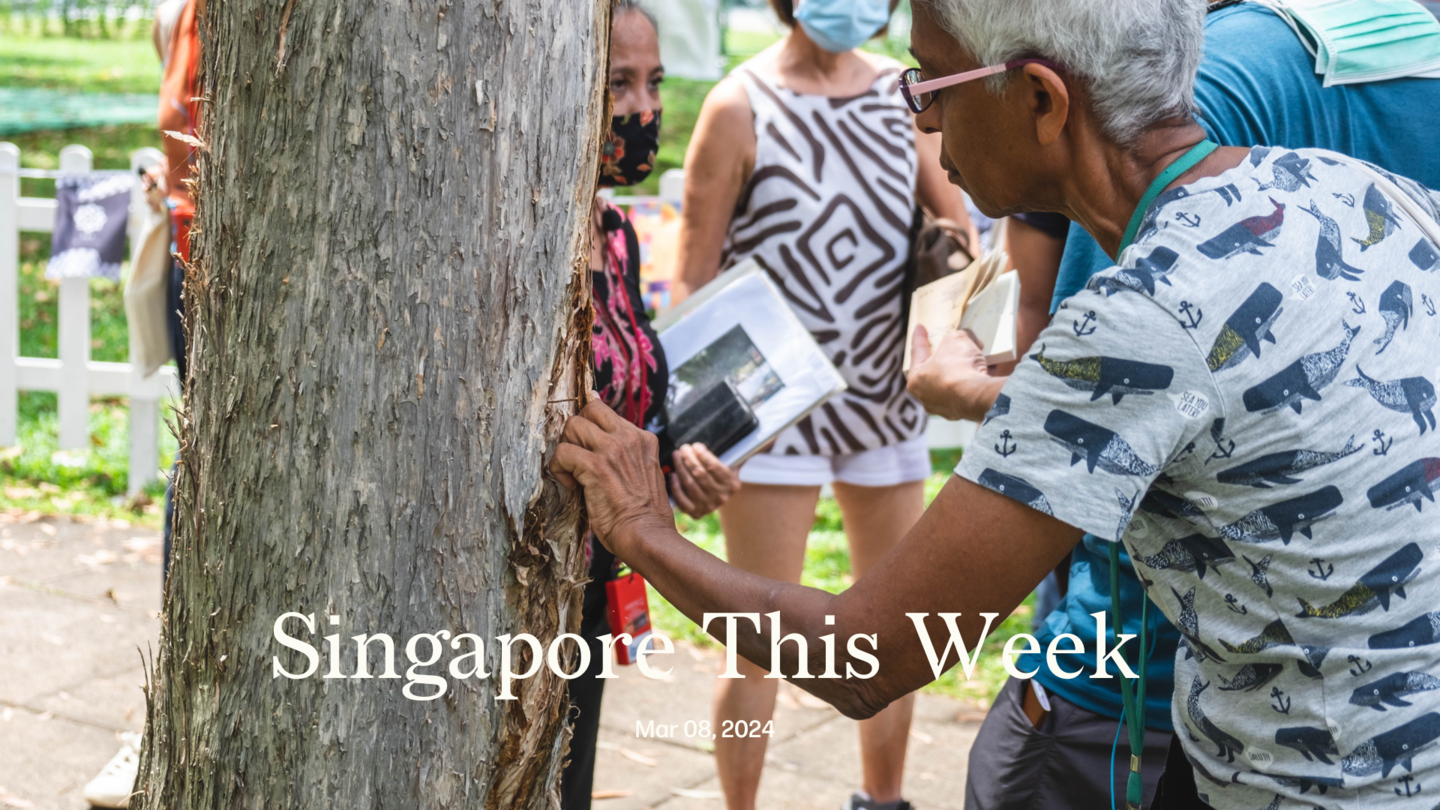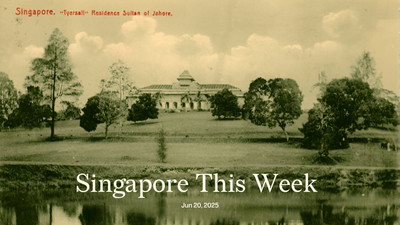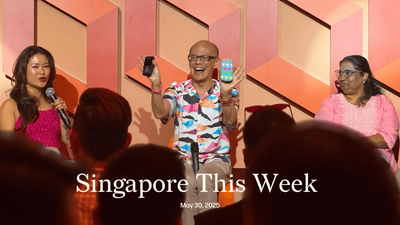Politics: Show me the money
Unlike many other democracies, Singapore does not require public asset declarations by ministers and other political office holders. Instead, ministers disclose this, as well as their company directorships, to the president via the prime minister. The intent of such declarations, globally, is to stem possible corruption and conflicts between private interests and public responsibilities. “Public declarations would thus go a long way in ensuring public accountability to the Singaporeans to whom the executive serves, and not just accountability to the president,” said Louis Chua, member of Parliament (MP) with The Workers’ Party (WP), last week. “Such declarations would go some way to breach the trust gap between Singaporeans and their elected officials and also help to prevent the spread of misinformation.”
In refuting the suggestion, Chan Chun Sing, education minister with the ruling People’s Action Party (PAP), argued that Singapore scores better in corruption perceptions rankings than some countries that enforce declarations. He also mentioned privacy concerns. These objections aren’t strong, in our view. He also asked: “Why stop at the ministers? Why not the members of parliament? Why stop at the [civil service’s] perm sec? Why not the directors?” Indeed, we believe many should be subject to declarations, including Chua and his fellow WP MPs. Such transparency will bolster our fledgling democracy. Moreover, in an era of growing foreign interference, it’ll also help enhance “protections against efforts at elite capture”, as academic Ian Chong has argued.
On a related note, EdgeProp reported this week that Mah Bow Tan, a former national development minister, sold his 28,376 sq ft bungalow for S$50m last year to Wang Qianqian, a naturalised Singaporean from China. That amount could buy over 90 median-priced HDB apartments. Mah entered politics in 1984, became a full minister in 1991, and (EdgeProp said) bought his bungalow in 1992. If he’d been subject to public asset declarations, Singaporeans would have known about the house (and his other assets) over 30 years ago. Would that knowledge have boosted public trust in our elected officials? We believe so. As it is, we’re only finding out almost a decade after he retired from politics. This lag may be beneficial to Singapore’s current, exorbitantly paid ministers. Given society’s yawning inequalities, the unaffordability of housing for many, and the frequent government refrains about land scarcity, the awareness of ministers’ (perhaps vast) land ownership could be a public relations nightmare for the PAP—something that would help the WP politically.
Some further reading: Jom’s first print issue has a pull-out map with accompanying infographics, which, among many other things, depicts the huge differences in living space between Singaporeans in apartments and those in bungalows. It was created in collaboration with Kontinentalist.
Politics: He gave one of the best Budget speeches
Many, Jom included, praised the bumper budget announced last month. Media attention since has focused on several debates: including between Lawrence Wong, deputy prime minister with the PAP, and Pritam Singh, WP chief, over their respective parties’ alleged flip-flops; and Heng Swee Keat, another PAP deputy minister, and Gerald Giam and Jamus Lim, two WP MPs, over the poor historical take-up rate of SkillsFuture.
As such, insufficient attention was paid to the speech by He Ting Ru, another WP MP, who made an impassioned plea for the government to trust ordinary Singaporeans more, particularly with information. She scrutinised, for instance, not just the headline-grabbing budget numbers, but what was missing. “This year, military expenditure is a single line $19bn expenditure without further breakdown despite making up 17 percent of the budget. While official secrets are a concern whenever we talk about our military, is there really no middle ground in offering detail on this expenditure?” She also noted that “[Singapore Police Force] projects named Arapaima and Aegis are allocated hundreds of millions of dollars each but the public are not provided even a one-line description.” Citing the Enterprise Support Package, she called for greater analysis of programme outcomes, not just spending.
She questioned Singapore’s novel approach to measuring inequality: using a Gini coefficient measure that probably makes Singapore appear less unequal in terms of income than it actually is; and not paying attention to wealth inequality. In asking the government to “properly trust citizens to co-create”, she referenced the Citizens’ Assembly that Ireland created in 2016, to deliberate socially contentious issues. “To conclude, I hope that more than half a century of nation building means that we have now arrived at a stage where a diversity of views has a place in our society, and that respectful disagreement is a hallmark of trust that is a two-way street.”
Society: Adoption and the crippling effects of disenfranchised grief
“Hi, my name Halim. I’m 41 yrs old. I had been adopted since i was born in 1977…My hope is to know who my origin parents are. If they are still alive. Please tell them that i am looking for them,” reads a post by an adoptee from Singapore on Adopted.com, an international registry that claims to reunite families by mutual consent. The desire for adoptees to meet their birth parents is often considered part of the process of “coming out of the fog”—a proverbial haze formed of denial and a lack of consciousness about what is sometimes termed “adoption trauma”.
When Parliament passed new adoption laws in 2022, the Ministry of Social and Family Development (MSF) began to assess the feasibility of setting up an adoption registry, which would contain information about birth parents and the circumstances that led to an adoption. For now, MSF will reconnect families if birth parents are contactable and are willing to meet their child. It has received 20 such requests from adoptees over the past two years. Singaporean Kartini Ahamat was born to a Chinese couple and taken in by a Malay family as a baby. She cried when she found this out at the age of 23, and now at 70 dreams of meeting her biological family before she dies. “I want to know why I was given away,” she told The Sunday Times.
Different adoptees experience “coming out of the fog” differently. Some realise that the “obscure, intermittent unhappiness or bewilderment” they’ve felt since childhood “is not a personality trait” but shared by other adoptees. While for others, coming to terms with being adopted can lead to feeling rage, hurt and abandoned. Experts have suggested that being adopted predisposes the individual to emotional difficulties and even to developing post-traumatic stress disorder. Studies have also shown that adopted children are at increased risk for a wide range of adjustment and attachment issues. They’re also four times more likely than non-adoptees to attempt suicide.
For adoptees unwilling or unable to process this trauma, they remain shrouded, clinging instead to the feel-good narratives about adoption. This might include assuring themselves that they are “grateful” about being adopted, that their birth parents gave them up for their own good, or that they are a “gift” to their adoptive parents. Yet, gratitude shouldn’t mask the fact that adoption is, at its core, a dispossessing act of separation, which informs the often hidden grief and uncertainty of those who have been adopted or have had their child adopted. Adoption is born of loss, wrote therapist Kate Murphy—something we can all do a better job of understanding.
Society: Catch and shame a litterbug
Snitches get stitches, unless you live in Singapore. To deter littering—more than 20,000 tickets were issued last year, up from 14,000 in 2021—the National Environment Agency (NEA) plans on employing a more “targeted” approach. This includes five times as many patrols at littering hot spots by both uniformed and non-uniformed officers, four times as many closed-circuit television deployments (for a total of 1,000), and more visible and larger scale blitzes. The authorities are also considering publicising images of culprits in order to “seek the community’s assistance in identifying offenders”.
Involving the larger community in identifying litterbugs will hopefully reinforce a “collective community ownership” to keep public spaces clean as well as discourage potential litterbugs, said Baey Yam Keng, PAP MP and senior parliamentary secretary for sustainability and the environment. “Care will be exercised”, says NEA, for cases involving children, the elderly or other vulnerable groups. Some netizens agree with this approach, a few even wanting the same vigilance on errant smokers and “YPs” (young punks) on personal mobility devices. Others aren’t happy about “old people [getting] immunity”. But there’s also a fair share of people fed up with the increased surveillance and possible broadcasting of litterbugs, which they understand to be “legal doxxing”. One Redditor asked, “What’s next? Grammar inspection?”
This “public shaming” is in keeping with what some academics consider a “unique shame profile” of Confucian societies, including Japan, Taiwan, and Singapore. “The evolutionary root of shame is in a self-focused, social threat system related to competitive behaviour and the need to prove oneself acceptable/desirable to others,” wrote psychologist Paul Gilbert. But by encouraging members of the public to participate in acts of collective “snitching”, NEA doesn’t necessarily inspire a change in intention or values. Potential litterbugs might just be deterred by the possibility of being embarrassed and losing social power, not because they really buy into the social benefits of keeping public spaces clean. As ever in Singapore, it’s the negative enforcement of the stick—shaming, threats and punishments—that is used to foster the “collective”.
History weekly by Faris Joraimi
As Swiftmania swept the nation this past week, I found myself developing my own minor musical obsession. Someone was playing Philip Glass at my workplace. I was drawn to those repetitive patterns built by a mix of classical and electronic instruments. It turned out to be Glassworks: the famous 1982 studio album of pop chamber music made specifically for the Walkman and personal cassette player. The compositions seemed to reflect that technological moment. There’s an aura of science fiction about them, and yet their titles (“Floe”, “Islands”, “Rubric”, “Façades”) evoke the movement of ice and water alternating with order and stillness.
As someone untrained in musical theory, I can’t tell you why those chaotic synthesisers sound pleasant. But music, obviously, tells us a lot about changing times. Today, Taylor Swift’s concerts generate their own economic multiplier effects, which analysts term Swiftonomics. Besides being a portal to carefree teenhood for many fans, Swift also organises a historical narrative based on the division of her musical output into “Eras”, the name of this 2023-24 tour. Philip Glass was also attuned to history, his minimalist style attributed to a “postmodern” sense. He composed the score to an experimental film released the same year as Glassworks, called Koyaanisqatsi, showing 20th-century scenes of cities, landscapes and space travel. Its title, meaning “chaotic life” or “life out of balance” in the Hopi language (of many Native Americans), suggests a breakdown of modernity’s triumph over squalor, misery and violence.
The closing shot shows the demolition of the Pruitt-Igoe complex, high-rise residences in Missouri designed to uplift society through planned, utopian housing. Its failure signalled the end of modernity, with its rational organisation of space and time. Fret not, for Glass declared in the 2000s that “Singapore plays its own tune”, in a tourist advertisement. But do we really? Cracks are also growing in our HDB housing model, inspired by that same worldwide urban philosophy based on modernist ambition. Events today—the climate emergency; the wicked hypocrisy of the West as Israel bombs Gaza; our international system’s slow-motion collapse—reveal the pillars of modernity to be as thin as glass.
Arts: Maps, monuments, and the Malay world—Kampong Gelam art walk
So many of the gelam tree’s names—tea tree, cajeput oil tree, kayu putih (“white wood”), 白千层 (bái qiān céng, literally “white thousand-layer tree”)—beautifully evoke its bountiful uses. Its leathery leaves could be boiled into an oil to medicate rheumatism and cramps, and its fruit ground into a black pepper. Its timber, for boatmaking and firewood. Its papery bark, scraped off, was used by the itinerant orang laut for the sails and awnings of their boats. It’s also a possible origin for Kampong Gelam’s name.
This naming and scraping converges in the upcoming edition of “OH! Open House”, an art walk that has been traversing Singaporean neighbourhoods since 2009. This year’s theme: “palimpsest”—which in textual studies means a manuscript from which earlier text has been scraped off so that the page might be written over. It can also mean something erased, but still bearing traces of its previous form. This metaphor for lost histories connects a dozen site-specific artworks that will be installed across Kampong Gelam from March 30th to May 12th, recalling the Malay quarter’s past lives and former centrality to a bustling port city. Artist Anthony Chin, for instance, will examine the historical monument of the old Istana, a palace now housing the Malay Heritage Centre; his research-driven conceptual work often engages with the reverberating power structures of our colonial pasts, by transforming ordinary materials into potent installations. Isabella Ong, who often works across art, computation and ecological sciences, turns to Kampong Gelam’s intellectual legacies and publishing pasts. She explores how the book might be represented as a living archive, paying homage to the birth of the printing press in Singapore along Bussorah Street, and its role as an intellectual hub for Malay nationalists.
This isn’t the first time “OH!” has revisited Singapore’s colonial residue. Its 2018 Emerald Hill edition invited participants to consider, to varying degrees of success, the British empire’s exploitation of resources, and its reductive taxonomising of local ecologies, on the site of a former nutmeg plantation. In the lead up to the Kampong Gelam walk itself is the second of two free talks tomorrow (March 9th) on the area’s textured cultural and historical terrain. Designer and performer Oniatta Effendi will moderate a conversation on “Food, Fashion, Faith: The Faces of Women Leadership in Kampong Gelam”, featuring Malay women entrepreneurs from these fields. The previous session’s speaker, architectural historian Imran bin Tajudeen, has wrestled with the palimpsest in his own research into maritime Southeast Asia and alam Melayu. One of its evocative former names is the Persianate zīr-bād, or “below the wind”. As art walkers wander around Kampong Gelam—formerly Seduyong, former seat of royals, former negeri di bawah angin—they leave tracks for future palimpsests, paved over but not forgotten.
Disclosure: Jom’s history editor, Faris Joraimi, was the history consultant for this edition of “OH! Open House”.
Arts: Day out for kids, and back to school for artists
The school holidays have become key milestones in arts companies’ programming calendars when it comes to shows and workshops for kids—and for parents hoping to keep their home-bound young charges occupied. Esplanade has carved out a niche here with “March On”, its annual children’s festival over the week-long March holidays, that brings together multidisciplinary arts programming and participatory experiences for the whole family. This year’s blockbuster is the dance-theatre production “Jungle Book reimagined” by the critically acclaimed Akram Khan Company from the UK. The British dancer-choreographer of Bangladeshi descent, a frequent headliner at our national arts centre, has reinvented Mowgli’s adventure to contend with the contemporary climate crisis, where a child finds unexpected allies among wild animals. This multimedia and movement piece confronts us with the devastated landscape the next generation may very well inherit and inhabit, while also retaining hope in reimagining a better world together.
While kids have their day out at the theatre, it’s back to school for artists making shows for children. These professionalisation programmes accompany the establishment of ASSITEJ Singapore, a non-profit network that is a member of the larger ASSITEJ International—the International Association of Theatre and Performing Arts for Children and Young People. The international network, which brings together artists and companies from over 75 countries, has been active since 1965, but the Singaporean chapter is much newer and began accepting members only last year. Their goals include building a community of practice for artists invested in arts for young audiences, including professional development.
Members get access to two workshops next week held in conjunction with “March On”. One features Denmark’s Theatre Madam Bach, where participants will learn how to create image-centric theatre based on the idea of “home”; the other is led by Australia’s Playable Streets, a participatory arts company known for their work in public spaces, and will focus on how to combine design, facilitation and “touch technology” that enables audiences to interact with artwork. Playable Streets’s musical installation at Esplanade, “The Plants”, invites us to do a bit of rewilding in Singapore’s urban jungle. It shouldn’t be surprising that there’s an increasing environmental bent to children’s arts programming: there are no holidays when it comes to climate work.
Tech: Temasek in talks to back AI pioneer OpenAI
Taylor Swift isn’t the only American icon the government is investing in. Temasek Holdings, whose sole shareholder is the Ministry of Finance, is reportedly engaged in early discussions to invest in OpenAI, the San Francisco-based artificial intelligence (AI) start-up that Elon Musk, Sam Altman and others co-founded. The potential deal aims to bolster Singapore’s ambitions to be a global AI hub while supporting OpenAI’s continued progress. OpenAI, one of the world’s leading AI companies, has rapidly expanded by creating systems like ChatGPT. However, its heavy research and development (R&D) costs necessitate further fundraising.
Temasek could provide a significant injection of capital to fuel OpenAI’s vision of developing more apps, or GPTs, for general use. This builds on the city-state’s recent announcement to invest more than S$1bn in AI over the next five years. Partnering with a major player provides access to cutting-edge research that accelerates local capabilities. If successful, the investment would mark OpenAI’s first state backing as it courts global governmental support. However, valuation debates and OpenAI’s ongoing US Securities and Exchange Commission probe and lawsuit must be considered. Both parties stand to gain—OpenAI from Temasek’s strategic guidance and Singapore from collaborating with a global leader.
Tech: Sea bullish on Garena and Shopee growth in 2024
After posting its first positive annual net income of US$163m (S$218m) last year, e-commerce leader Sea Group expects strong double-digit growth from Garena and Shopee to drive profitability in 2024. Forrest Li, Sea’s founder and chairman, highlighted Shopee’s market dominance in Indonesia, where livestreaming has boosted quarterly orders by 15 percent, generating a 23 percent growth in annual revenue to US$9bn (S$12bn). Improving livestream unit economics and retention rates position Shopee to outcompete rivals like TikTok Shop, which Indonesia has banned. Li has credited scale, local expertise and infrastructure for Q4’s success, which has carried into Q1 2024.
Garena, the game developer that Sea grew out of, also shows promise, incorporating AI into game development to expand genres and content. While 2023’s performance fluctuated with seasonality, Garena-published Free Fire’s “very positive” trend has fuelled optimism about double-digit user and revenue growth across Garena this year. Sea enters 2024 with tailwinds from Shopee’s solidifying of its leadership in key markets and Garena’s optimising of its operations. If realised, projected gains across e-commerce and entertainment are expected to drive the company’s transition to sustained profitability, creating a sea of opportunity for its shareholders.
Tech: Eat Just suspends Singapore ops as alt-protein challenges persist
Given the abysmal financial performance of publicly listed Beyond Meats and the flatlining of meatless meat sales in the US from 2020 to 2022, the mainstreaming of alternative proteins seems to be a distant reality. In Singapore, US plant-based food giant Eat Just has temporarily halted operations, reflecting the hurdles of scaling alternative proteins commercially. The Straits Times reported that Eat Just is evaluating processing conditions, economics and an Asia production strategy after facing a US$100m (S$133.7m) lawsuit from its bioreactor manufacturer in the US. Last September, Eat Just dismissed about 40 employees, barely under a month after raising US$16m (S$21.4m). Even as the company reiterated its production goals, it scrapped plans for Singapore’s largest plant-protein factory. Eat Just’s S$61m Bedok facility also appears to have been rarely used in the past six months. The suspensions come after high-profile launches here in 2018. Experts have noted that massive investments are essential in this nascent industry. Eat Just’s significant regional funding from C2 Capital will be tested as it navigates production challenges post-commercialisation. While Singapore remains committed to cultivating alternative proteins, leading firms like Eat Just are likely to continue facing obstacles transitioning lab breakthroughs into sustainable operations at scale. How the company recalibrates its Asia strategy could impact development in the region. One wonders as well whether the more than S$317m that has been invested in the sector will ever bear fruit for Singapore’s “30 by 30” vision for food security.
If you enjoy Jom’s work, do get a paid subscription today to support independent journalism in Singapore.








